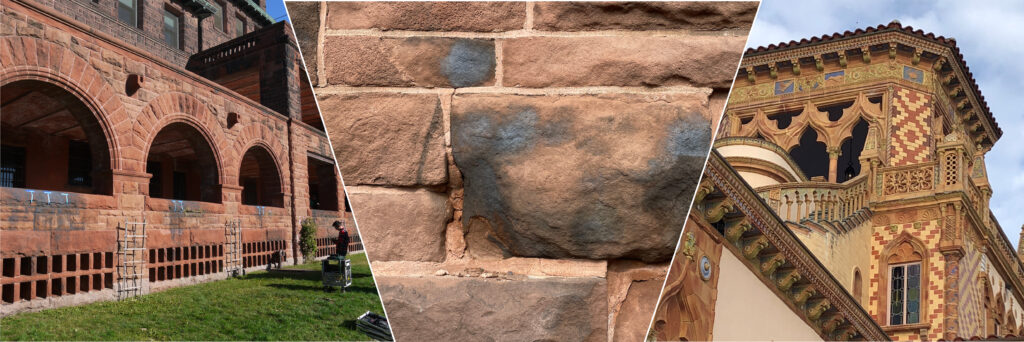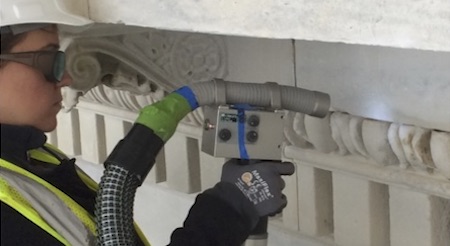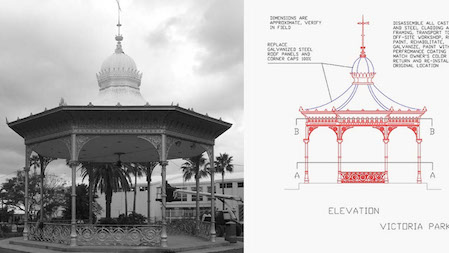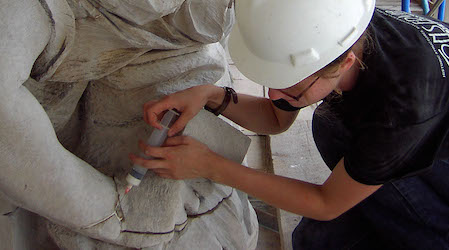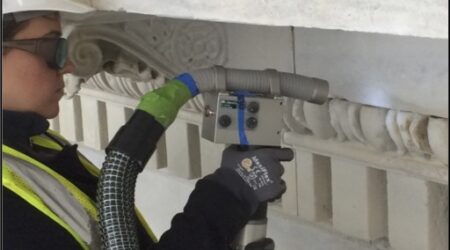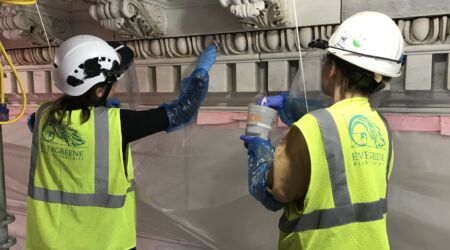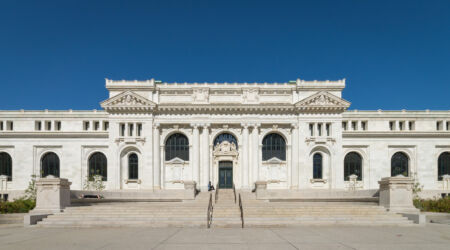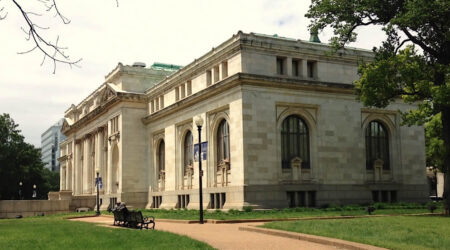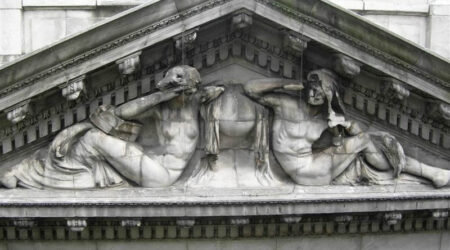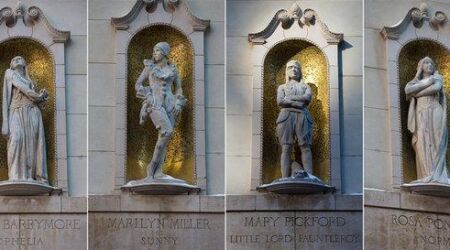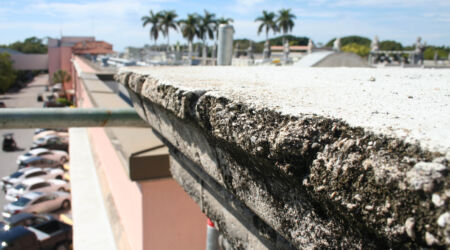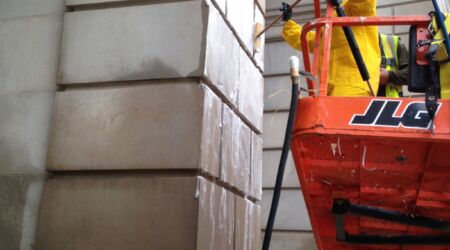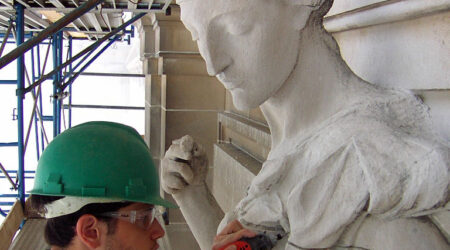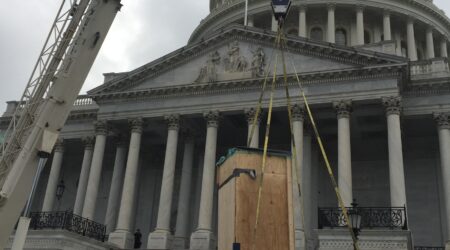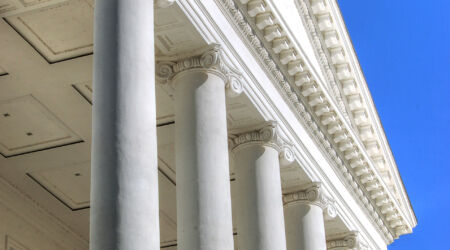There is more than one approach to restoring historic building surfaces. Aside from the aesthetic detriments caused by soiling and pollution, contaminants that build up over time attract and retain moisture which accelerates deterioration of historic materials caused by weathering forces. Material deficiencies such as eroded or open mortar joints, cracked masonry units, or loose roofing or wall components provide avenues for moisture intrusion, potentially causing structural deterioration, fractures, and corrosion of underlying architectural materials. Severe build-up of soiling or other deposits can also obscure minor deterioration and prevent the timely detection of material failures. Wind, temperature fluctuation, and humidity levels affect the rate at which pollutants and deposits accumulate and contribute to deterioration.
The unique composition of the substrate and its interaction with soiling informs the selection of the most appropriate materials and procedures. What may be safe and effective for the treatment of certain stains or materials on one substrate may be too harsh or leave discolorations on another. Investigation, testing, and analysis are typically recommended to find the most suitable approach. The versatility of modern laser technology as well as high-capacity steam can offer safer, less invasive, and more environmentally friendly options in certain cases.
If neglected, façades can also present a safety hazard. Severe stone and mortar disintegration can result in the loss of architectural elements and sculpture, posing a potential risk to the public. Our conservators can carry out detailed façade surveys and translate data into scope drawings, which facilitate planning efforts for specific conservation treatments during the restoration.
